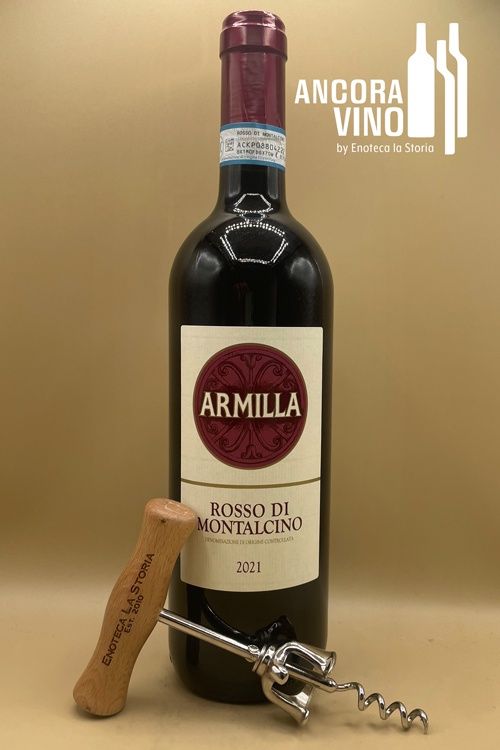2021 Armilla Rosso di Montalcino
Armilla is a small, 4.5 hectare family run estate located in Tavernelle, a tiny village southwest of Montalcino proper. It was purchased in 1980 by Silverio and Marchetti as a retirement project. The family planted vineyards and built a small winery, and began to produce wines, although initially it could not be called Brunello because it was outside of the DOCG zone at the time. In 1995, the land was included in the Brunello di Montalcino DOCG and the family (daughters Ilaria and Fiorella, and their children Nicola and Giacomo) joined the business. Unfortunately, Silverio died in 1997 before the first bottle was sold; however, the rest of the family has carried on the winery in his memory.
100% Sangiovese. Fermentation and maceration in steel tanks for about three weeks, with eighteen months of aging in neutral oak barrels. Wild-berry, crushed herb and tilled earth aromas mingle with exhilarating whiffs of camphor and violet on this fragrant red. Reflecting the nose, the vibrant palate doles out crushed raspberry, juicy Marasca cherry, white pepper and clove alongside tangy acidity. Lithe polished tannins offer supple support. Drink now and over the next ten years. Armilla farms a site in Tavernelle planted in 1982 on layers of calcareous, siliceous and arenaceous elements.
About Armilla
In ancient Rome, "armilla" was a golden bracelet warn by both men and women, although it also refers to a particular bracelet awarded to Roman soldiers for military merit on the field and worn on the left arm. The 4.5-hectare Armilla farm is located south-west of Montalcino in the direction of Grosetto. It was purchased in 1980 by Silverio and Marchetti as a retirement project. The family planted vineyards and built a small winery, and began to produce wines, although initially it could not be called Brunello because it was outside of the DOCG zone at the time. In 1995, the land was included in the Brunello di Montalcino DOCG and the family (daughters Ilaria and Fiorella, and their children Nicola and Giacomo) joined the business. Unfortunately, Silverio died in 1997 before the first bottle was sold; however, the rest of the family has carried on the winery in his memory. The land in this area originates from the decomposition of rocks from the Eocene Period. Geologically speaking, the soil is composed of polygenic conglomerates with a prevalence of calcareous, siliceous and arenaceous elements more or less cemented and imbedded with sandy layers. Rich of minerals and with an average level of fertility, the soil is suitable for the cultivation of vineyards.

